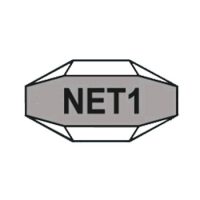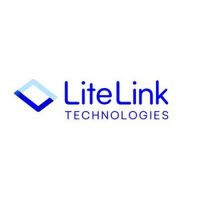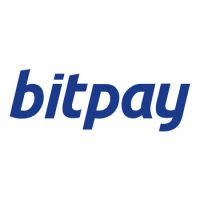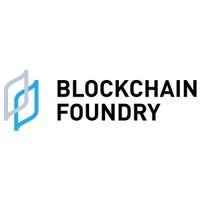Blockchain
Hyperledger Announces Hyperledger Fabric 2.0

Hyperledger, an open source collaborative effort created to advance cross-industry blockchain technologies, today announced the general availability of Hyperledger Fabric 2.0. This major release of Hyperledger Fabric, a distributed ledger framework that’s been under development by the Hyperledger community since 2016, delivers a number of features and enhancements needed to increase the efficiency and security of production deployments.
Much of the work on Hyperledger Fabric 2.0 focused on new ways to manage the chaincode (or smart contract) lifecycle to maximize flexibility, remove bottlenecks and create more options to distribute governance. Security and data privacy were also big development priorities, so many features and enhancements are geared towards delivering more granular control of private channels and minimizing vulnerabilities.
Key Hyperledger Fabric 2.0 features include:
Decentralized governance for smart contracts — Hyperledger Fabric 2.0 introduces decentralized governance for chaincode, with a new process for installing a chaincode on your peers and starting it on a channel. The new Fabric chaincode lifecycle allows multiple organizations to come to agreement on the parameters of a chaincode, such as the chaincode endorsement policy, before it can be used to interact with the ledger. The new model offers several improvements over the previous lifecycle, including requiring multiple organizations to agree to the parameters of a chaincode, creating a more deliberate chaincode upgrade process and simplifying endorsement policy and private data collection updates
New chaincode application patterns for collaboration and consensus — The same decentralized methods of coming to agreement that underpin the new chaincode lifecycle management can also be used in your own chaincode applications to ensure organizations consent to data transactions before they are committed to the ledger. Organizations can add automated checks to chaincode functions to validate additional information before endorsing a transaction proposal. Additionally, human decisions can be modeled into a chaincode process that spans multiple transactions. The chaincode may require actors from various organizations to indicate their terms and conditions of agreement in a ledger transaction. Then, a final chaincode proposal can verify that the conditions from all the individual transactors are met, and “settle” the business transaction with finality across all channel members.
External chaincode launcher —The external chaincode launcher feature empowers operators to build and launch chaincode with the technology of their choice. Use of external builders and launchers is not required as the default behavior builds and runs chaincode in the same manner as prior releases using the Docker API.
Private data enhancements — Hyperledger Fabric 2.0 enables new patterns for working with and sharing private data, without the requirement of creating private data collections for all combinations of channel members that may want to transact. Specifically, instead of sharing private data within a collection of multiple members, you may want to share private data across collections at a transaction or state key level with selected channel members. Each private data collection may contain a single organization, or perhaps a single organization along with a regulator or auditor.
State database cache for improved performance on CouchDB — When using external CouchDB state database, read delays during endorsement and validation phases have historically been a performance bottleneck. With Hyperledger Fabric 2.0, a new peer cache replaces many of these expensive lookups with fast local cache reads.
Alpine-based docker images — Starting with 2.0, Hyperledger Fabric Docker images will use Alpine Linux, a security-oriented, lightweight Linux distribution. This means that Docker images are now much smaller, providing faster download and startup times, as well as taking up less disk space on host systems. Alpine Linux is designed from the ground up with security in mind, and the minimalist nature of the Alpine distribution greatly reduces the risk of security vulnerabilities.
For more on the features and enhancements, see What’s new in Hyperledger Fabric 2.0.
“Hyperledger Fabric has established itself as a popular and practical distributed ledger framework and has powered much of the transition from conceptualization to commercialization we’ve seen in enterprise blockchain,” said Brian Behlendorf, Executive Director, Hyperledger. “Fabric 2.0 is a new generation framework developed by and for the enterprises that are building distributed ledger capabilities into the core of their businesses. This new release reflects both the development and deployment experience of the Fabric community and confirms the arrival of the production era for enterprise blockchain.”
Hyperledger Fabric is already widely deployed in PoCs and production networks of all sizes and scales. To ensure smooth transition to this new version, there is a range of documentation specifically for Upgrading to the latest release. There’s also documentation on Upgrading your components and Updating the capability level of a channel, as well as a specific look at the Considerations for getting to Fabric 2.0.
Community quotes:
“The release of Hyperledger Fabric 2.0 is an important step forward in the on-going evolution of DLT, and was developed based on feedback from real-world use, including improved chaincode management capabilities and performance enhancements,” stated Rob Palatnick, Managing Director and Global Head of Technology Research and Innovation at The Depository Trust & Clearing Corporation (DTCC) and Governing Board Chair at Hyperledger. “DTCC’s work with Hyperledger enables us to bring DLT expertise and knowledge in-house while contributing our learnings and progress on enterprise-scale projects with the DLT community. We look forward to our continued efforts around Fabric 2.0 and in working with Hyperledger.“
“I am delighted to see Hyperledger Fabric v2.0 released,” said Nao Nishijima, Researcher, Hitachi, Ltd. “Hitachi has contributed to the social innovation through the development of superior, original technology and products since its foundation in 1910. Hitachi believes that Hyperledger Fabric v2.0 and related blockchain technologies will further expand the possibility to merge sustainability and business and to resolve social issues through the contribution to the initiatives like Society 5.0 and Sustainable Development Goals (SDGs). Hitachi continues to contribute to the Hyperledger community and to provide blockchain solutions for various industries.”
“IBM is excited about this key milestone in Hyperledger Fabric’s development lifecycle,” said Jerry Cuomo, IBM Fellow and VP of Blockchain Platform, IBM. “We are proud to have been part of the community that has collaborated on its development, and we are eager to upgrade the IBM Blockchain Platform — industry’s first multi-cloud implementation of Hyperledger Fabric — to leverage the new capabilities and improved performance in this milestone release.”
“IntellectEU is grateful to have been a part of the Hyperledger community since the very beginning,” said Thomas Bohner, VP of Blockchain at IntellectEU. “The release of Hyperledger Fabric 1.0 was a breakthrough for enterprise blockchain. Today we are excited about the Hyperledger Fabric 2.0 release. More specifically the private data enhancements that will drive adoption for our clients in the financial services industry. Our engineering team will be applying decentralised governance for chaincode when helping our clients migrating to Fabric 2.0.”
“Oracle is excited about Fabric 2.0 GA release,” said Mark Rakhmilevich, Senior Director, Blockchain Production Management at Oracle. “Hyperledger Fabric underpins Oracle Blockchain Platform, which is used by numerous customers in production, and a number approaching production deployments. The new capabilities in this release will directly benefit these customers who are looking for greater data privacy capabilities, increased performance, and decentralized consensus mechanism. I also think the new decentralized governance model for chaincode updates and organization-specific extensions will enable broader flexibility and help with the chaincode update process in consortia environments. These practical improvements will help to accelerate adoption of Fabric across our enterprise customers and government organizations. Oracle is very committed to Hyperledger Fabric and we’d like to congratulate the Fabric community on this important milestone.”
“We’re excited to stand alongside our friends as they launch Hyperledger Fabric 2.0,” said Troy Ronda, Chief Scientist for SecureKey Technologies Inc. “This release demonstrates a mature project with enhanced performance and deployment features that will allow for innovative identity projects to come to fruition, like our Verified.Me service. Hyperledger’s projects – such as Fabric and Aries – provide important open source components for building ecosystem services like Verified.Me, and we’re happy to contribute to such an excellent and dedicated community.”
Additional Resources:
- Download Hyperledger Fabric 2.0
- Read Hyperledger Fabric 2.0 documentation
- Learn more about Hyperledger Fabric 2.0 and what this release means with via the blog
- Plug into the Hyperledger community at github, Chat, wiki or the mailing list
- Follow Hyperledger on Twitter, like on Facebook, follow on LinkedIn or subscribe to the YouTube channel
- Register for Hyperledger Global Forum 2020 to see a demo of Fabric Private Chaincode or attend a workshop like Architecting Production-Worthy Solutions with Hyperledger Fabric
SOURCE Hyperledger
Blockchain
HODL 2025 opens in Dubai, advancing the Emirates’ position as a global financial innovation hub
HODL 2025 opens in Dubai
Blockchain
Millionero Shines at TOKEN2049 Dubai

Millionero
Blockchain
Blocks & Headlines: Today in Blockchain – May 14, 2025

Blockchain’s evolution continues at breakneck speed, shifting from niche applications into mainstream finance, supply-chain integrity, and social impact initiatives. Today’s briefing spotlights five stories that illustrate this maturation: Cardano’s seamless asset integration in the privacy-focused Brave browser; a strategic partnership between Cokeeps and Maybank Trustees to bring tokenized wealth management to institutional clients; Ripple’s leadership framing blockchain as the dismantler of traditional banking silos; the UNDP’s pilot using distributed ledgers to improve HIV treatment tracking across Eurasia; and a novel IoT-blockchain collaboration to authenticate fine wines end-to-end. In this op-ed–style roundup, we analyze not only the mechanics of each announcement but also their broader implications for Web3’s scaling, DeFi’s credibility, and blockchain’s social-good potential.
1. Cardano Integrates Native Blockchain Assets into Brave Browser
What Happened
On May 13, Cardano foundation engineers unveiled a collaboration with Brave Software to natively support Cardano blockchain assets—ADA tokens and native tokens—within Brave’s wallet panel. Users can now view balances, send ADA, stake directly, and interact with back-end metadata for Cardano NFTs, all without leaving the Brave interface. This move follows Brave’s earlier Ethereum and Solana integrations, signaling a multi-chain future for privacy-centric browsers.
Analysis & Implications
-
User Experience Leap: By embedding Cardano functionality at the browser level, Brave eliminates friction for onboarding new users who would otherwise juggle external wallets or browser extensions. Easier access to staking and NFT markets could drive stronger engagement for Cardano’s ecosystem.
-
Multi-Chain Convergence: Brave’s strategy underscores the shift from siloed blockchain apps toward unified, chain-agnostic user experiences. As Web3 users demand seamless access across protocols, wallets and browsers will compete to offer the most inclusive multi-chain dashboards.
-
Cardano’s Market Position: For Cardano, this integration is a validation of its low-fee, high-throughput value proposition. While Ethereum remains dominant in DeFi and NFTs, Cardano’s energy efficiency and growing dApp roster may attract users seeking alternatives—especially if wallet UX barriers continue to fall.
Opinion
Brave’s embrace of Cardano assets exemplifies the coming era of “wallet-agnostic” access, where the browser becomes the front door to multiple blockchains. For Cardano, it’s a critical trust signal that boosts on-ramps and could accelerate liquidity in its DeFi protocols. Yet success hinges on robust in-browser security and responsive UI design—any wallet bugs or performance lags will erode the trust this collaboration seeks to build.
Source: CoinDesk
2. Cokeeps & Maybank Trustees Develop Blockchain Asset-Management Solutions
What Happened
Malaysia’s Cokeeps, a digital-asset custody pioneer, has partnered with Maybank Trustees to design and deploy tokenized asset-management platforms for institutional investors. The joint solution leverages a permissioned blockchain to record ownership of tokenized bonds, real-estate funds, and alternative-assets, while integrating smart-contract–driven compliance checks and real-time audit trails.
Analysis & Implications
-
Institutional Adoption: By combining Cokeeps’s custody technology with Maybank’s regulatory expertise and trustee services, the duo addresses two perennial barriers to institutional crypto investment: custody risk and compliance certainty. This model could serve as a blueprint for other Asia-Pacific custodians.
-
Tokenization Benefits: Tokenized securities on a shared ledger can reduce settlement times from days to seconds, lower transaction costs, and open fractional-ownership models—broadening access to asset classes historically reserved for high-net-worth individuals.
-
Regulatory Alignment: Embedding KYC/AML logic into smart contracts ensures that every token transfer automatically enforces jurisdictional rules. As regulators worldwide demand transparent on-chain auditability, such integrated controls will become table stakes for institutional offerings.
Opinion
This collaboration exemplifies how established financial institutions can embrace blockchain without ceding control. Rather than disrupting Maybank’s trustee role, tokenization enhances it—transforming trustees from manual record-keepers into guardians of programmable assets. The real test will be scale: can the platform handle high-volume trading with uncompromised security and consistency? If so, we may see a wave of legacy banks repackaging their services through blockchain rails.
Source: The Star
3. Ripple Board Member: “Blockchain Is Unbundling Banks”
What Happened
On May 14, Stuart Alderoty, a board member at Ripple Labs, declared in an industry webcast that blockchain technology is fundamentally “unbundling” traditional banking services—payments, settlements, custody, and compliance are each evolving into modular, chain-native offerings. He argued that banks will increasingly source best-of-breed infrastructure from fintech and blockchain providers rather than maintain monolithic, in-house systems.
Analysis & Implications
-
Modular Finance: Alderoty’s vision anticipates a composable finance ecosystem: banks orchestrate various on-chain services—liquidity pools, cross-border rails, automated KYC—via APIs, akin to how e-commerce platforms integrate third-party payment gateways and fraud-prevention tools today.
-
Competitive Pressure: Incumbent banks face competition not only from neobanks but also from protocol-level service providers (e.g., on-chain oracles, decentralized exchanges). To retain clients, banks must either build or partner to offer seamless, blockchain-enhanced products.
-
Industry Collaboration: Ripple itself underscores this shift: its On-Demand Liquidity service unbundles foreign-exchange and settlement from legacy correspondent banking, delivering real-time cross-border payments at reduced cost.
Opinion
The unbundling thesis places a premium on interoperability and standards. Without common protocols, financial services risk siloed “rails” that mimic today’s fragmented SWIFT-based processes. Collaborative industry consortia—like the U.K.’s Project Rosalind or Japan’s mHUB—will be crucial to define shared messaging formats and governance frameworks. For blockchain to truly disaggregate banking, ecosystem players must coalesce around open, secure standards.
Source: U.Today
4. UNDP’s Big Ideas: Using Blockchain to Fight HIV in Eurasia
What Happened
The United Nations Development Programme (UNDP) launched its “Big Ideas” pilot in Eurasia, deploying a blockchain-enabled platform to manage HIV treatment data across multiple countries. The solution uses a hybrid public-private ledger to ensure patient anonymity while providing authorized clinics and NGOs with secure, immutable access to treatment adherence records and drug-dispensation logs.
Analysis & Implications
-
Data Privacy & Integrity: The hybrid architecture combines zero-knowledge proofs on a public chain—verifying treatment events without exposing personal health information—with a consortium chain that controls participant permissions. This dual model balances transparency and confidentiality.
-
Cross-Border Collaboration: HIV programs often span regions with varying healthcare regulations. A shared blockchain registry simplifies data exchange, reducing duplication and ensuring each patient’s history is up to date, even when they move between clinics or countries.
-
Scalability & Sustainability: Running on energy-efficient proof-of-stake networks and leveraging off-chain data storage for sensitive medical records, the platform minimizes transaction costs while maintaining high throughput—essential for scaling across thousands of patients.
Opinion
UNDP’s blockchain pilot represents a maturation of social-impact use cases—from proof-of-concepts to production-grade systems. By prioritizing patient privacy and regulatory alignment, this model could extend to other health-data challenges, such as vaccine distribution or epidemic tracking. The key will be forging long-term partnerships between multilateral organizations, local health authorities, and blockchain providers to sustain and expand the network beyond the pilot phase.
Source: UNDP
5. Identiv, ZaTap & Genuine Analytics Digitally Authenticate Fine Wines
What Happened
Identiv, ZaTap, and Genuine Analytics have unveiled a joint solution that employs specialized IoT tags and blockchain to verify the provenance of fine wines. Each bottle is fitted with a tamper-evident sensor that records temperature, humidity, and location data onto a permissioned ledger. Consumers can scan an NFC-enabled label to view the wine’s end-to-end history—from vineyard pressing to cellar aging and global shipping.
Analysis & Implications
-
Counterfeit Mitigation: The fine-wine market suffers from widespread fraud, with counterfeit bottles estimated to comprise up to 20% of high-end sales. Immutable provenance records and sensor-backed condition reports significantly raise the bar for authenticity verification.
-
Consumer Trust & Engagement: Beyond security, the solution enhances the collector experience—buyers gain confidence in their purchase and a richer narrative around each vintage’s journey, potentially commanding higher resale values on secondary markets.
-
Cross-Industry Potential: This IoT-blockchain fusion can be adapted for other luxury goods—artworks, haute horlogerie, or premium spirits—where provenance and condition are paramount.
Opinion
By blending real-world data streams with ledger immutability, this collaboration exemplifies blockchain’s most compelling value proposition: trusted digital twins of physical assets. However, the system’s integrity depends on robust IoT security—if sensors are spoofed or tampered with, the chain of trust breaks. Stakeholders must therefore enforce secure tag provisioning, periodic audits, and tamper detection measures to uphold the solution’s credibility.
Source: PR Newswire
Conclusion
Today’s blockchain dispatch underscores a pivotal shift: decentralized ledgers are weaving into the fabric of finance, social impact, and supply-chain integrity. From Brave’s browser-level Cardano support to tokenized asset platforms, from the unbundling of banking services to health-data pilots and luxury-goods authentication, blockchain is proving its versatility and maturing beyond speculative markets. As on-chain and off-chain worlds converge, interoperability, security, and standards will determine which projects scale and which falter. For stakeholders across Web3, DeFi, and enterprise IT, the imperative is clear: embrace modular architectures, uphold rigorous governance, and focus on real-world value—only then will blockchain realize its promise of trust, transparency, and transformative efficiency.
The post Blocks & Headlines: Today in Blockchain – May 14, 2025 appeared first on News, Events, Advertising Options.
-

 Blockchain6 days ago
Blockchain6 days agoBitget Blockchain4Youth sostiene l’innovazione del Web3 e dell’IA all’hackathon “Build with AI” di Google Developer Group
-

 Blockchain Press Releases6 days ago
Blockchain Press Releases6 days agoBybit Surpasses 70 Million Users, Reinforces Commitment to Transparency and Institutional Growth
-

 Blockchain7 days ago
Blockchain7 days agoBlocks & Headlines: Today in Blockchain – May 9, 2025 | Robinhood, Solana, Tether, China, Women in Web3
-

 Blockchain3 days ago
Blockchain3 days agoBlocks & Headlines: Today in Blockchain – May 12, 2025 | Rootstock, Zimbabwe Carbon Registry, Fastex, 21Shares, The Blockchain Group
-

 Blockchain Press Releases2 days ago
Blockchain Press Releases2 days agoBullish partners with the Gibraltar Government and GFSC to pioneer world’s first crypto clearing regulation
-

 Blockchain Press Releases3 days ago
Blockchain Press Releases3 days agoBybit Introduces BOB to P2P: Bolivian Traders Can Now Buy, Sell in Local Currency and Earn Commissions
-

 Blockchain Press Releases7 days ago
Blockchain Press Releases7 days agoMEXC Lists USD1, Accelerating Global Stablecoin Innovation with World Liberty Financial
-

 Latest News6 days ago
Latest News6 days agoCasino Kings Knocks Out Partnership with Boxing Powerhouse BoxNation








































